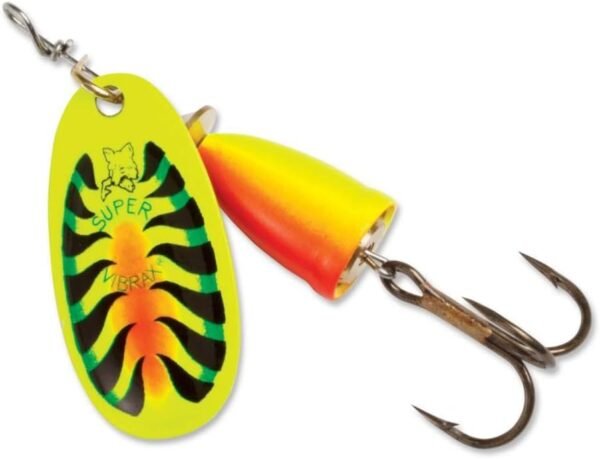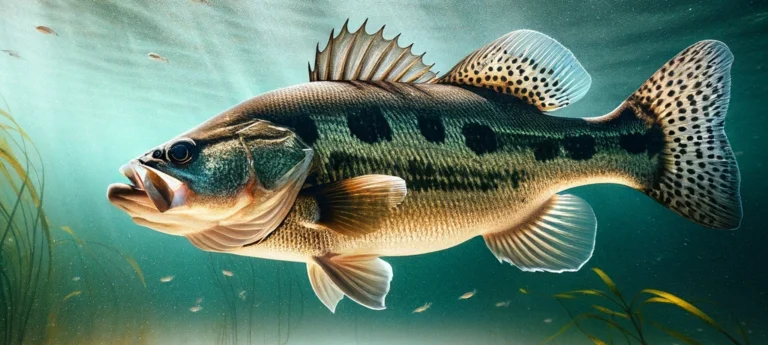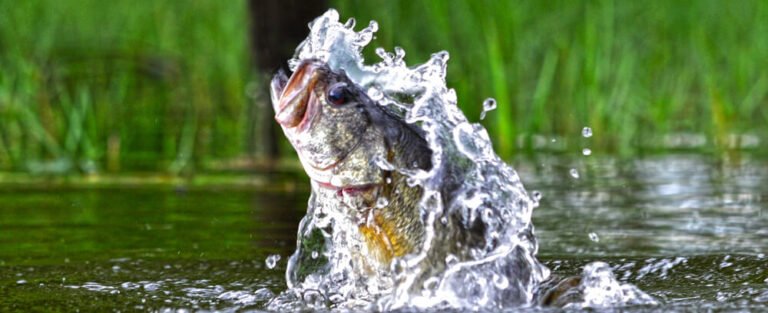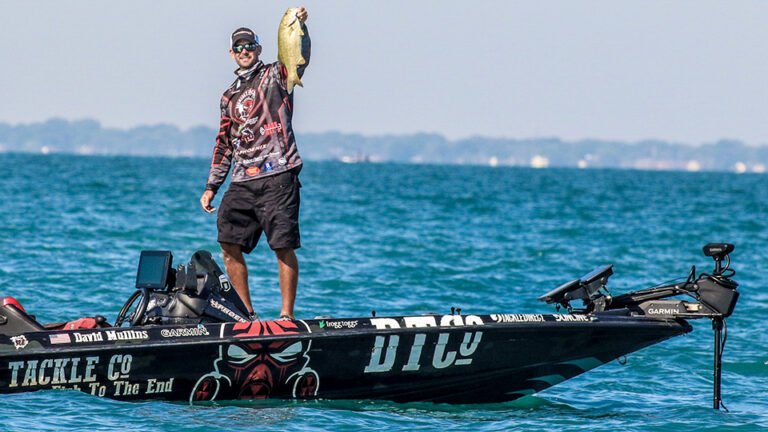Soft baits are a top choice for many anglers. When it comes to bass fishing lures, lures are designed to mimic various types of prey that bass feed on, and they come in a wide range of shapes and sizes. One popular category of soft plastic baits is worms.

Texas-rigged worms are versatile and effective, rigged with a bullet weight and offset hook. They can be worked through cover or dragged along the bottom to entice strikes from hungry bass.
Carolina-rigged worms are another great option, featuring a sliding sinker above the hook that allows for subtle movement as it’s retrieved. Drop shot worms, rigged with a special hook and weight below, excel at enticing finicky bass by presenting the bait above the bottom.
Moving on to craws, these soft plastic baits imitate crawfish, a favored bass meal. Creature baits with multiple appendages create lifelike movement in the water as they’re hopped or dragged along the bottom.
Crawfish imitations typically feature realistic pinchers and antennae that trigger predatory instincts in the bass. Grubs are another staple in any angler’s tackle box for targeting bass.
Curly-tail grubs have a curly tail design that creates enticing vibrations when retrieved or fished with subtle jigging motions. Paddle-tail grubs have a wider tail that produces more pronounced swimming action when retrieved steadily or used for vertical jigging.
Hard Baits
Hard baits offer another set of options for anglers targeting bass in various fishing conditions. Crankbaits come in two main types: diving crankbaits and lipless crankbaits. Diving crankbaits have a buoyant body with a bill at the front that determines their dive depth.
They’re effective for covering a lot of water and searching for bass in different depths. As the name suggests, Lipless crankbaits lack a diving bill and have a flat front.
They sink quickly and can be retrieved at various speeds, making them versatile lures in shallow or deep waters. Jerkbaits are designed to resemble injured baitfish.
Suspending jerk baits remain at a specific depth when paused during retrieval, imitating an easy target for bass. Floating jerk baits rise slowly toward the surface when paused, creating an enticing action that often triggers aggressive strikes.
When it comes to topwater action, poppers, buzz baits, and frogs are among the best bass fishing lures you can use. Poppers have a concave mouth that creates a popping sound when twitched on the surface, imitating prey struggling on top of the water.
Buzzbaits feature a rotating blade that churns up the surface while retrieving, attracting attention from the predatory bass below. Frogs excel at mimicking frogs or other small creatures skimming across vegetation mats or lily pads.
Jigs and Spinnerbaits
Jigs and spinnerbaits offer anglers versatility in their presentations for catching bass under various conditions. Jigs come in different styles, such as flipping, football, swimming, and finesse.
Flipping jigs are designed for flipping or pitching into heavy covers like docks or vegetation mats where big bass often hide. Football jigs have a wide head shape resembling a football, enabling them to crawl over rocky bottoms effectively.
Swim jigs feature streamlined bodies with weed guards perfect for covering water while imitating baitfish movements. Finesse jigs are smaller-sized jigs with compact profiles that work well in clear water or when targeting finicky fish.
Spinnerbaits consist of a metal wire with one or two spinning blades, a lead head adorned with a skirt, and often a soft plastic trailer. Single-bladed spinnerbaits are ideal for slow-rolling retrieves or fishing in shallow water, while double-bladed spinnerbaits allow for faster retrieval speeds and generate more vibration that can attract bass from greater distances.
With an array of soft plastic baits, hard baits, jigs, and spinnerbaits, you now have insight into the best fishing lures for bass. Understanding their unique characteristics and how they mimic natural prey will greatly increase your chances of success on the water.
Factors to Consider When Choosing Bass Fishing Lures
Water Conditions
When selecting the best bass fishing lures, one crucial factor to consider is the water conditions. The clarity of the water plays a significant role in determining which lures will be most effective. In clear water, bass tend to rely more on their vision and may be more cautious.
Using lures that closely resemble natural prey like minnows or shad can yield great results in such cases. On the other hand, in stained or muddy water where visibility is limited, bass rely more on their lateral line and vibration sense to locate prey.
Therefore, lures with strong vibrations and bright colors can help attract their attention. Another important consideration is water temperature.
Bass are cold-blooded creatures, so their activity levels are influenced by the temperature of the water they inhabit. In warmer waters during spring and summer, bass are generally more active and aggressive in their feeding behavior.
This makes it an ideal time to use fast-moving lures such as crankbaits or topwater baits that create a commotion on the water’s surface. Conversely, when bass becomes less active in colder waters during fall and winter, using slower-moving presentation techniques with jigs or soft plastic baits can prove more effective.
The depth of the water is yet another crucial factor when selecting fishing lures for bass. Different lures excel at different depths due to their design characteristics and buoyancy properties.
For shallow waters up to five feet deep or less, topwater baits like poppers and frogs can be highly successful as they imitate surface-dwelling prey perfectly. However, as you go deeper into mid-depth ranges of around 5-15 feet deep or even deeper down below 20 feet deep in certain situations (such as when targeting structure), diving crankbaits and jigs become excellent choices that can effectively reach the desired depth and entice bass to strike.
Fish Behavior
Understanding fish behavior is key to selecting the most effective bass fishing lures. Bass are known for their varying feeding patterns, which can be influenced by weather conditions, time of day, and prey availability. When bass are actively feeding, they are more likely to chase down lures aggressively and strike them with intensity aggressively.
During these times, using lures that create a lot of commotion and mimic injured or fleeing prey can trigger their predatory instincts. On the other hand, if bass seems less active or is in a neutral mood, employing finesse techniques with soft plastic baits like worms or grubs that have subtle movements can entice strikes from less aggressive fish.
Another aspect of fish behavior to consider is predator-prey relationships in your fishing area. By observing the natural food sources available to bass in a particular location, you can make more informed lure choices.
For example, if crawfish or crayfish are abundant in a certain body of water, craw imitations such as creature baits or jigs can prove highly effective as they mimic this favored prey item. Similarly, if there’s a prevalence of shad or minnows in the area where you’re fishing for bass, selecting lures that resemble these baitfish will greatly increase your chances of success.
Lure Presentation
In addition to water conditions and fish behavior, how you present your lure also plays a crucial role in attracting bass. Retrieval speed is an essential factor when it comes to lure presentation.
Generally speaking, fast retrieval speeds work well when triggering active and aggressive fish reaction strikes. Crankbaits retrieved at high speeds or spinnerbaits burned through the water can entice aggressive strikes from bass looking for a quick meal.
Conversely, slow and subtle presentations are effective when fish are less active or more cautious. Techniques like slow-rolling a spinner bait or employing a “dead-stick” approach with soft plastic baits can tempt even the most finicky bass into biting.
The action of your selected lure also has a significant impact on its effectiveness. The action refers to how the lure moves in the water; different lures have varying degrees of action.
Some lures possess subtle actions that replicate injured or dying prey, while others have more pronounced and aggressive movements. Choosing the appropriate action level depends on various factors like water temperature, fish activity level, and personal preference.
Experimenting with different types of lures and observing how bass respond to their movements will help you determine which actions elicit the best results. By considering these factors—water conditions, fish behavior, and lure presentation—you can make informed decisions when selecting fishing lures for bass.
Remember that successful fishing is often a combination of skill, knowledge, and adaptability to changing conditions on the water. So, arm yourself with various lures suited for different scenarios to maximize your chances of hooking that prized trophy largemouth or smallmouth bass.
Bass Fishing Lure Modifications and Techniques
Color customization with dyes or markers
When it comes to bass fishing lures, customization can make all the difference in enticing those finicky bass to bite. One popular method of customization is color modification using dyes or markers.
By adding vibrant colors or subtle hues to your lures, you can mimic the appearance of local forage and increase your chances of success on the water. To customize your lures, select a high-quality dye or marker specifically designed for fishing applications.
Soft plastics like worms and craws are ideal candidates for color customization. Whether you prefer bright fluorescent shades or natural earth tones, these dyes and markers allow you to achieve the desired coloration easily.
Experiment with different combinations and patterns that imitate local baitfish, crayfish, or other prey species that bass feed on. Remember, bass have keen eyesight, so even subtle color changes can significantly impact their willingness to strike.
Adding scent
In addition to visual cues, adding scent to your bass fishing lures can give you a competitive edge on the water. Bass rely heavily on their sense of smell when locating prey, so introducing an enticing scent can trigger their predatory instincts and entice them into biting. There are numerous scents available specifically formulated for bass fishing purposes.
Some common scents include garlic, shad, crawfish, anise, and coffee-based aromas resembling natural baitfish smells. When applying scent to your lures, be sure not to overdo it; a little goes a long way.
Apply the scent sparingly but evenly across the lure’s surface so that it disperses naturally in the water as you retrieve it. By customizing your bass fishing lures with attractive colors and appealing scents tailored to mimic local forage, you’ll greatly enhance your chances of enticing that elusive bass to strike.
Conclusion
In the bass fishing world, selecting the best fishing lures for bass can be difficult. However, by understanding the different types of lures available and customizing them to match local conditions, you can greatly increase your chances of success on the water.
Whether you opt for soft plastics, hard baits, or jigs and spinnerbaits, remember to consider factors such as water conditions and fish behavior when choosing your lure. Furthermore, don’t be afraid to experiment with customization techniques like color modifications and adding scents.
These seemingly small adjustments can make a difference in enticing bass to strike. So go out there with confidence, armed with your personalized arsenal of bass fishing lures, and trust in your abilities.
With patience and perseverance, you’ll undoubtedly experience thrilling hooksets and joyous battles with these magnificent sportfish that will keep you coming back repeatedly. Happy fishing!






